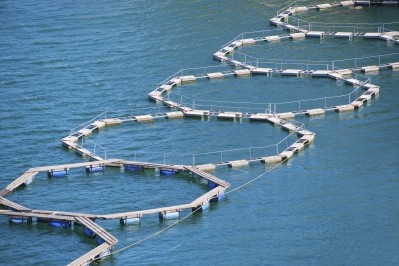News focus: Omega-3
Supply: Where omega-3 comes from
Fish oils
Fish oil is by far the biggest source for omega-3, estimated by Frost & Sullivan to account for some 85 percent of the market by volume.
Almost all the fish oil produced in the world comes from South America and Morocco, and only a tiny percentage of global crude fish oil production is actually channeled into the market for human consumption, with the rest being used for fish feed and animal feed.
According to the Global Organization for EPA and DHA (GOED), an omega-3 trade association, around 6-10 percent of the total 1m tons crude fish oil produced per year is refined to produce omega-3 for human consumption. The figure from the International Fishmeal and Fish oil Organisation (IFFO) is even smaller, placing human consumption at less than 3 percent. Out of this, only 0.6 percent is thought to relate to the European market.
Most of the refining takes place in facilities in Norway and Canada, with some also sent to the UK, Japan and the US. According to Frost & Sullivan figures published in 2007, the US market for fish oil stands at 17,384 metric tons, and the EU market at 13,340 metric tons.
There have been some claims that fish oil production is contributing to depleting global fish stocks. However, Adam Ismail, executive director of GOED, says this is a “misconception” because fish oil generally comes from fish such as anchovies, herring, mackerel and sardines, only a very small portion of which are sourced for human consumption.
The one potential threat to the supply of marine-sourced omega-3s is environmental. Warmer waters, possibly as a result of El Nino conditions, are thought to have contributed to lower DHA levels in fish oil from South American waters over the last few years.
This has meant that it has been harder to find the standard 18:12 ratio fish oil (18 percent EPA, 12 percent DHA). Because this became scarcer, prices went up by 50-75 percent last year for crude fish oil. However, according to GOED, this had little impact on the price of omega-3s as food or supplement ingredients as most of the increase was absorbed by the oil refiners.
Some companies responded to the situation by selling a 30 percent total EPA/DHA combination, although this is unlikely to be a long-term solution due to an increased importance being placed on the EPA:DHA ratio as a result of increased awareness.
Fish oil has not as yet been harvested this year (the fall harvest is expected in October-November), so it is as yet unsure as to whether the 18:12 ratio continues to be affected.
Major suppliers of marine-sourced omega-3 include Ocean Nutrition, Lipid Nutrition, DSM, Croda, Epax, Cognis (further to its acquisition of Napro Pharma), and GC Rieber, which has a relatively low profile, but which is one of the leading players in terms of volume production.
Algal oils
The market for algal omega-3 is currently dominated by two firms: Martek Biosciences (US) and Lonza (EU). There are a number of smaller players trying to squeeze in, but they have a minor impact due to the network of patents that currently protect the market.
Algal oil, which is a concentrated source of DHA and is used primarily for infant health (90 percent of total volumes) or cognitive benefits, currently accounts for 3 percent of the total omega-3 market (Frost & Sullivan).
The algae are produced in Martek’s and Lonza’s factories, and then undergo an extraction and refining process. Algal-sourced omega-3 oils generally range from around 40-50 percent DHA.
Although this type of omega-3 is predominantly used in products for infant health, the suppliers are encouraging its use in other areas as an alternative to fish omega-3. One of the advantages promoted is the vegetarian origin.
Frost & Sullivan estimates the EU market for algal-sourced omega-3 is $56m, while the US market is $83m. GOED believes this is understated.
Prices in this market tend to remain relatively stable as there are only two major producers and prices tend to be set on a long-term contract basis. These are currently thought to range between $85 and $180 per kilo, depending on applications.
One of the key issues in the algal-sourced omega-3 market is the web of intellectual property, which has so far kept smaller competitors from entering. However, Ismail said Martek’s patents will begin expiring in the next decade, which will encourage other suppliers into the market and place downward pressure on price.
Plant oils
Flaxseed is currently by far the largest source of plant-based omega-3. Frost & Sullivan estimates that the flax seed sector accounted for 13 percent of the volumes of omega-3 ingredients in 2007.
Flax oil generally contains around 50-60 percent ALA, a short-chain fatty acid.
Supply of omega-3 from flax is subject to the environmental challenges that face all farmers.
Also, flax competes for acreage with other oilseeds such as canola, which could also potentially impact flax production. For example, trade group Flax Council of Canada said that Canada (a major global flax producer) this year saw a decline in flax acres because of strong canola prices.
Major suppliers of flax omega-3 include Pizzey’s Nutritionals (recently purchased by Glanbia), Bioriginal, Degussa, Biodroga, Barleans and Arista Industries.
A promising emerging area in plant-sourced, omega-3 production is the modification of the fatty acid profile of oils from regular oilseeds in order to produce plant-sourced EPA/DHA. GOED says the market for these products is “pretty attractive and quite untapped from the plant side”.
The world’s big agricultural firms, such as Monsanto, Solae, BASF and Dow AgroScience are currently working on producing long-chain fatty acids from oilseeds such as soy, canola and flaxseed. Some initial production has been successful at a pilot scale, and there are estimates that the technology could result in plant-soured EPA/DHA reaching the market within around three to seven years.
The final article in NutraIngredient’s omega-3 series, to be published tomorrow, will examine the market for the oils.
To read part one of this series, please click hereTo read part two of this series, please click hereTo read part four of this series, please click here











